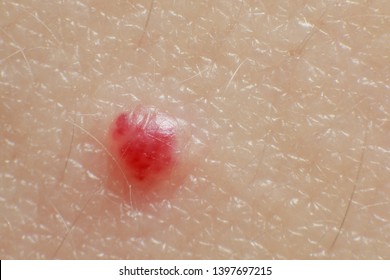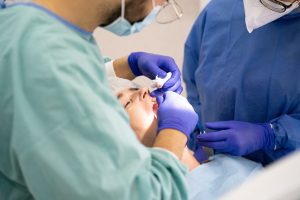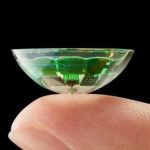Cherry Angiomas
Cherry Angiomas are a common skin condition with several causes and symptoms. Learn about the symptoms and causes of this condition, as well as how to treat it. There are also some genetics associated with the condition. Learn more about genetics and other risk factors. angiomas are not cancerous, but they can indicate other problems.
Possible causes
While most people don’t require the help of a doctor, a cherry angioma can be painful. To treat it, your doctor may prescribe an anti-inflammatory drug, such as propranolol or topical beta-blockers, or systemic corticosteroids.
Most angiomas are noncancerous and do not pose any risks, but if you notice any changes in the appearance, shape, or size of the angioma, it’s best to see a dermatologist. If the angioma bleeds or becomes unsightly, you may want to have it removed. Fortunately, there are various nonsurgical methods available for removing them, including ultrasound.
Cherry angiomas can be caused by a variety of factors. While genetics may play a role, there are also some toxins in the environment that can contribute to this skin disease. For example, bromide can cause hormonal imbalances in the body and is a common chemical in industrial products.
A cherry angioma is a noncancerous skin growth composed of clusters of blood vessels. These growths can occur anywhere on the body. Although c- angiomas tend to appear on older people, they can occur in people of any age. They are typically harmless, but they are painful if they are scratched or cut open.
Symptoms
Cherry angiomas occur as a result of an increase in endothelial cell growth in skin. These cells line the blood vessels and can become inflamed and red. The blood vessels can also break open to form papules on the skin. Although these papules are often unsightly, they are often treatable.
C- angiomas are generally painless and may bleed on occasion. Treatment options include freezing, shaving, lasers, and surgery. C- angiomas are also called spider angiomas because of their spider-like appearance. They tend to occur on the face and chest. This type of angioma is more common in children and women, but it can also occur in adults.
Cherry angiomas can vary in size, but typically measure just a few millimeters in diameter. They are typically round or domed in shape with a smooth flat top. They can occur anywhere on the body, although they commonly grow on the face, chest, or stomach. C-angiomas may also occur in clusters, but little information is available about their causes.
The main cause of cherry angiomas is genetic predisposition. However, it is believed that other factors, such as climate and exposure to certain chemicals, can also contribute to the development of c- angiomas. Age is also a risk factor, as the lesions tend to increase in size as you age. They are usually harmless and do not cause any damage to the body, but they can cause bleeding if they aren’t removed.
For cherry angiomas, there are various treatment options. Home remedies can be effective and include tea tree oil and apple cider vinegar. These natural remedies can reduce the size and color of the growth. Tea tree oil has antibacterial and anti-inflammatory properties that make it a good choice for treating cherry angiomas.
Treatment
The best treatment for c-angiomas is simple and doesn’t involve surgery. Although the lesions aren’t harmful, they can be painful and unsightly. You can try various methods, including squeezing, scratching, and even piercing. The most common place they appear is on the torso, but they can also show up on the face, neck, and scalp. In severe cases, they can cause excessive bleeding.
Cherry angiomas form on the skin’s surface when the endothelial cells that line blood vessels in the skin begin to proliferate. This causes the blood vessels to dilate and become angiomas. These blood vessels are small and translucent, but become red and swollen. They can be very unsightly and bleed easily. The condition is common in people of all ages. They can be caused by a number of factors, including pregnancy, the environment, and certain medical conditions.
Although cherry angiomas aren’t cancerous, they should still be treated. If you notice a blemish on your body, seek medical care immediately. They’re usually harmless, though they may be bothersome. The first step in treating a cherry angioma is to find out where it is.
Cherry angiomas are small growths of skin that are typically red and a cluster of blood vessels. They appear anywhere on the body, though they’re more common on the trunk and arms. They can also appear on the face or fingers. Even though they’re harmless, they bleed easily if irritated or scratched. A dermatologist can perform an examination to determine whether or not you’re suffering from a cherry angioma.
Surgical treatment for c-angiomas is not necessary. There are many effective treatments that can be used to remove the growths on the skin. In fact, most cases, it’s possible to use a combination of laser and diathermy to remove them entirely.
Genetics
The genetics of c- angiomas is not well understood, but there are some genetic variants associated with the development of the disease. The most common mutations were found in the GNA14 and GNAQ genes. These mutations are associated with vascular and melanocytic proliferations, and are associated with angiomas. Other mutations that are associated with the development of angiomas include the R183 mutation desfasoars and the Q209 mutation.
C-angiomas can occur anywhere on the body, but are most common on the legs, arms, and chest. However, sometimes they must be removed to rule out malignant skin lesions, such as nodular melanoma.
In addition to genetics, other factors play a role in developing angiomas. For example, individuals with a family history of angiomas are more likely to develop them. Exposure to certain toxins may also increase the risk of developing the disease. One chemical that has been associated with angiomas is bromide, which can be found in industrial and food additives.
Genetic analysis of c- angiomas may provide important clues for identifying other rare proliferative vascular processes, such as hemangioendotheliomas and pyogenic granulomas. While this type of angioma is largely unrepresentative of c- angiomas, there are a few high-functional impact mutations found in c- angiomas.
Several studies have found that c- angiomas are associated with the development of melanoma. Some of the strongest associations were seen in individuals with mixed ancestry, fair skin color, and green or hazel eyes. People with a personal history of melanoma also had increased risk of developing c- angiomas.
Prevalence
The prevalence of c- angiomas is increasing, particularly among the elderly. While these lesions are benign, they can be a warning sign of a developing internal malignancy. These benign tumors can occur in both sexes and all races.
Researchers have identified several risk factors for c- angiomas, such as race and ethnicity. Individuals of mixed ancestry, medium/olive skin tone, green/hazel eyes, and personal history of melanoma are at a greater risk for this skin cancer.
C- angiomas are common skin growths composed of tiny blood vessels. Because they are so close to the skin’s surface, they can bleed profusely. Surgical removal is an option for c- angiomas, but it can be painful and leave scarring. A less invasive option is electrocautery, which involves burning off the skin growths with an electrical current. This procedure is often used for pre-cancerous growths.
Using 3D total body imaging, researchers can better study c-angiomas on different body sites and develop a more complete understanding of their natural history. Although there are only a few studies linking multiple c-angiomas to cutaneous malignancies, this association is worth further study to test causality and prognostic significance.
C- angiomas are the most common form of acquired vascular proliferation of the skin. They are also known as Campbell de Morgan spots or senile angiomas. They are common in adults over the age of thirty, and their number increases with age. While they are benign, they may require medical attention if they begin to bleed or change in appearance or feel.















